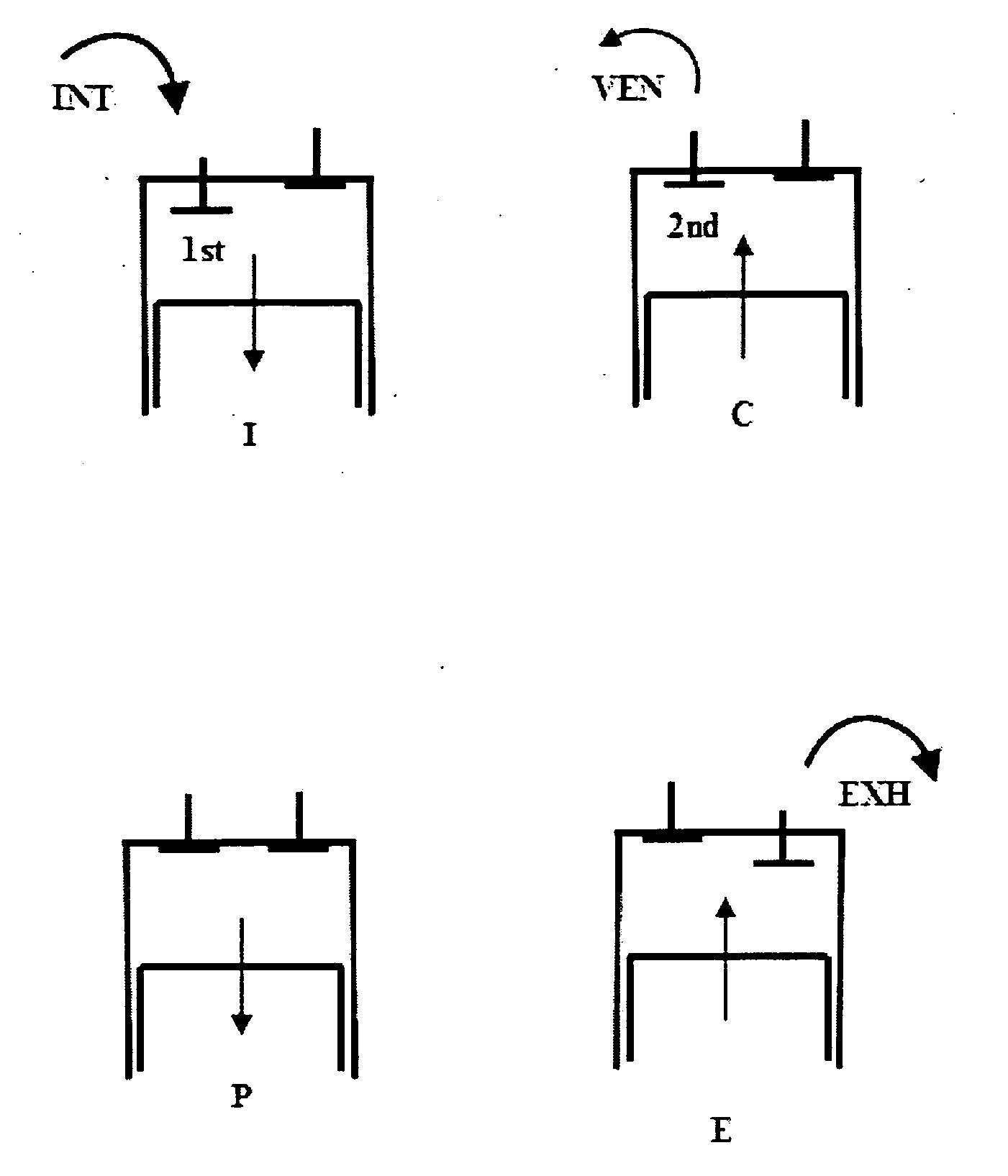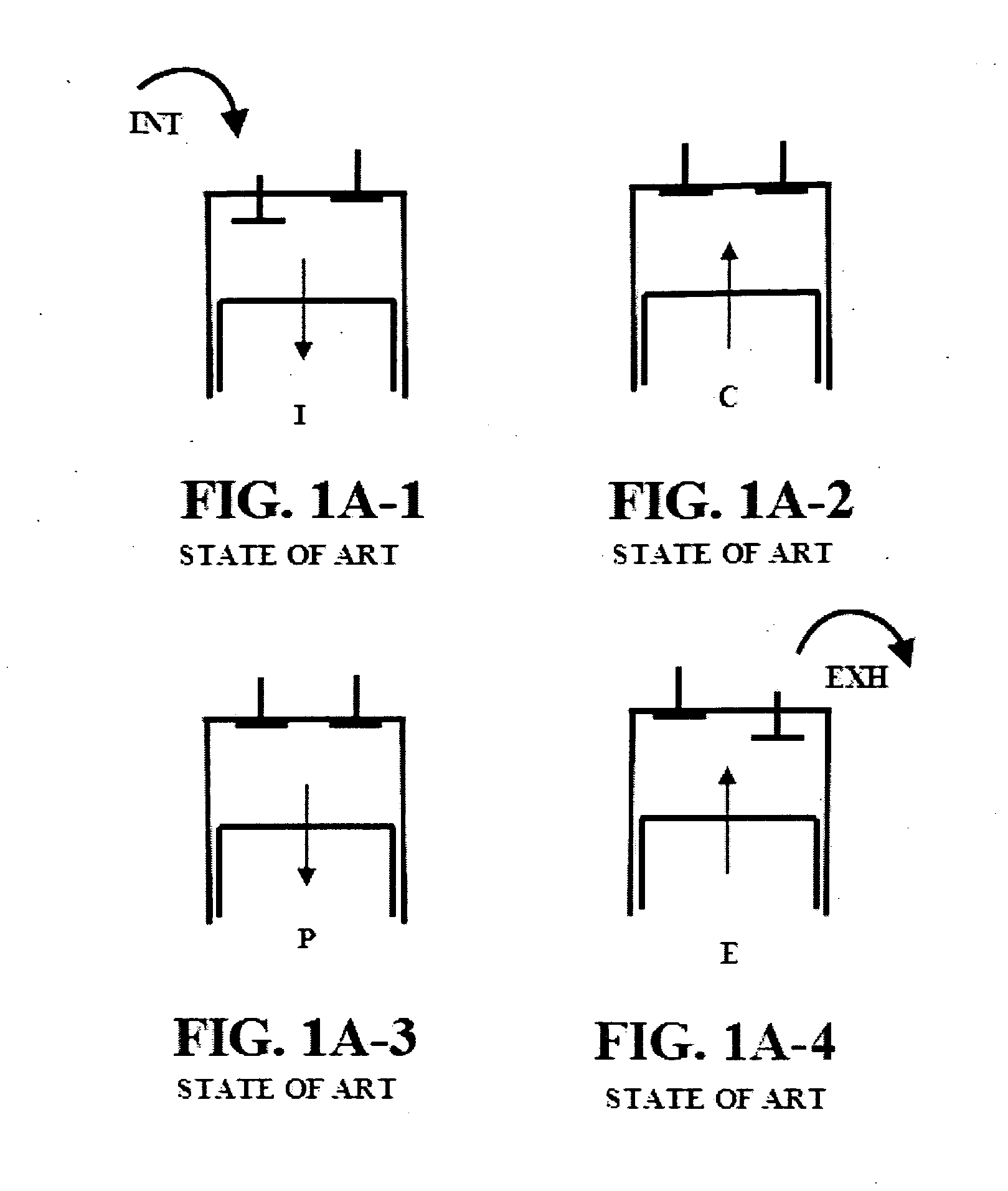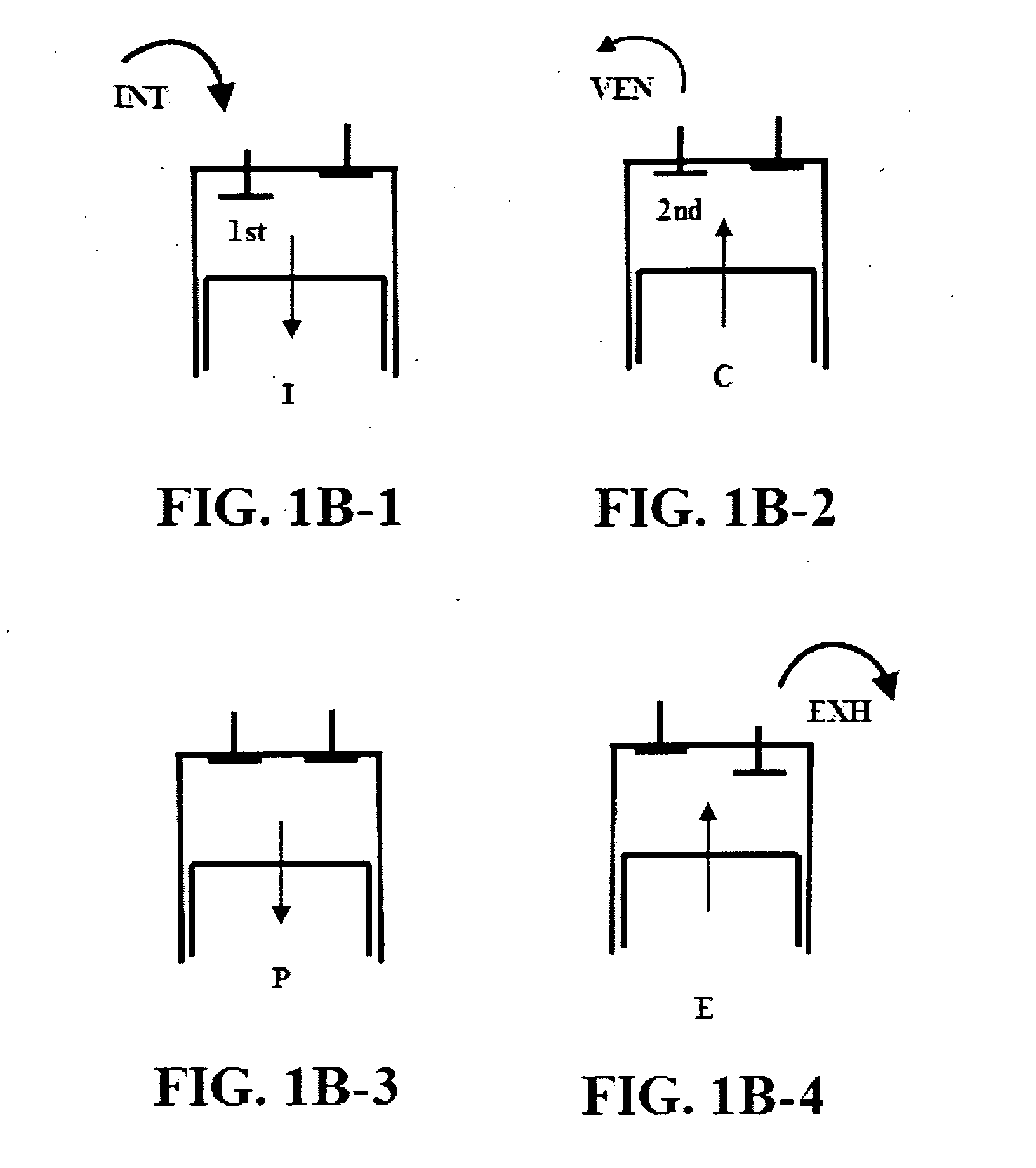In-cylinder emission cleaning by cams with auxiliary-lobes
a technology of auxiliary lobes and in-cylinder nox, which is applied in the direction of valve drives, machines/engines, electric control, etc., can solve the problems of even greater power loss and torque reduction prices, and achieve the effect of small valve li
- Summary
- Abstract
- Description
- Claims
- Application Information
AI Technical Summary
Benefits of technology
Problems solved by technology
Method used
Image
Examples
Embodiment Construction
[0029]Attention is turned to FIGS. 1A-1-1A-4, which illustrate the state-of-art four strokes of an internal combustion engine. These, in the sequence of operation, are the Intake I in FIG. 1A-1, the Compression C in FIGS. 1A-2, the Power P in FIG. 1A-3 and the Exhaust E in FIG. 1A-4. The intake gas—charged into the cylinder—is labeled INT in FIG. 1A-1 and the exhaust gas—discharged from the cylinder—is labeled EXH in FIG. 1A-4. The intake valve opens once in the intake phase and the exhaust valve opens once in the exhaust phase normally, that is all along the intake and exhaust strokes correspondingly.
[0030]In the followings, this normal operation will be referenced as gas Cycle A of a diesel engine. All the proposed gas cycle modifications (B, C, D, E, F, I and J) will describe Diesel cycles thereof. However, all are applicable to Otto cycles as well, with the restriction of not to vent air-fuel-mixture into the exhaust manifold, and not to let it escape from the intake manifold, b...
PUM
 Login to View More
Login to View More Abstract
Description
Claims
Application Information
 Login to View More
Login to View More - R&D
- Intellectual Property
- Life Sciences
- Materials
- Tech Scout
- Unparalleled Data Quality
- Higher Quality Content
- 60% Fewer Hallucinations
Browse by: Latest US Patents, China's latest patents, Technical Efficacy Thesaurus, Application Domain, Technology Topic, Popular Technical Reports.
© 2025 PatSnap. All rights reserved.Legal|Privacy policy|Modern Slavery Act Transparency Statement|Sitemap|About US| Contact US: help@patsnap.com



